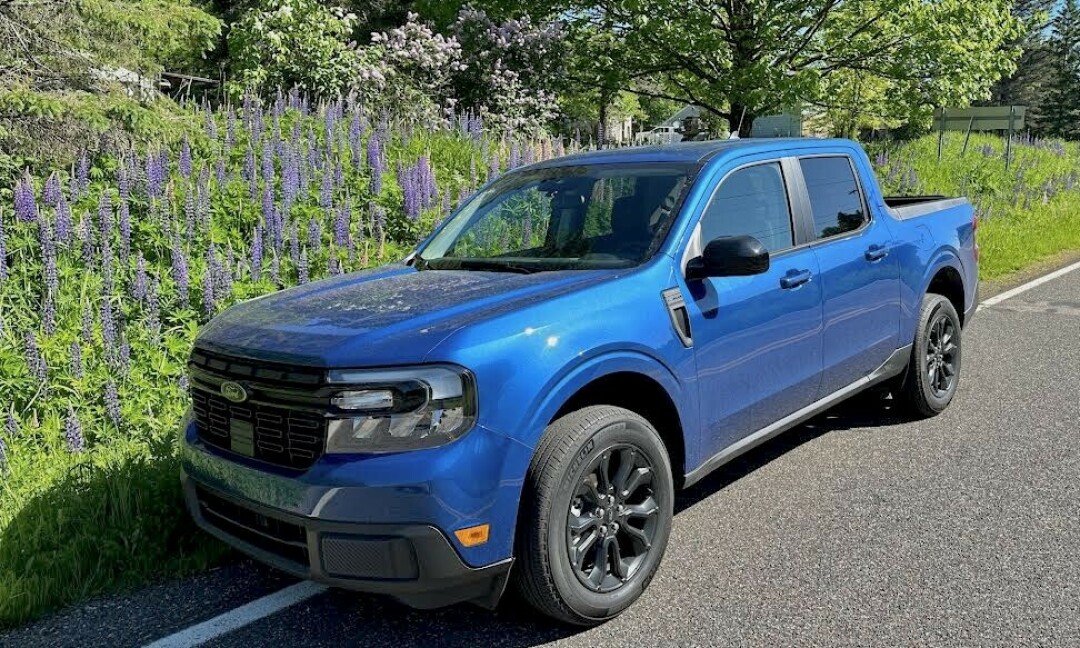Maverick proves imports aren’t only good hybrids

Ford Motor Company came out with its first hybrid vehicle with the Escape compact SUV, and it was brilliantly devised to take the best parts of the major achievements of the industry leaders — the Toyota Prius and the Honda Insight.
As time has passed, the Prius has become the world’s leading hybrid, while Honda ended the Insight’s career, then has brought some hybrid vehicles back to compete.
Ford, meanwhile, is making SUVs hand over fist, and one of its biggest success stories in recent years is the compact Maverick pickup truck — a downsized, front-wheel-drive version of Ford’s industry leading F150 pickups. After hitting the market — if not filling demands — Ford has added various models to the Maverick line.
Honda and Toyota are meeting demands for hybrid vehicles these days, and so are the South Korean twins, Hyundai and Kia, and you can spend a few days traveling to different dealerships to see which ones you might prefer.
A curious development is that you can get the Maverick in a hybrid, or you can get a Maverick with all-wheel-drive, but you can’t get both. Yet.
We feel certain that an AWD Hybrid will be coming soon, but in the meantime we can easily satisfy our pickup-testing chores with the FWD Hybrid.
It seems to me that Ford engineers have made some interesting advances in hybrid-building with the Maverick, which starts with the 2.5-liter dual-overhead-camshaft 4-cylinder engine, which has never felt so peppy in all its other applications.
Somehow, instead of simply channeling the regenerative power from braking back to the electric motor’s battery pack, Ford also is allowing the abundant regenerative and stored electric power to bolster the performance of the 2.5 gas engine.
So the bright Atlas Blue Metallic test Maverick, a top-level Lariat variation, performs very well, whether dashing into merge duty on a freeway, or taking off from a red light when you’re first in line and want to get clear of the congestion around you.
The suspension also responds well, allowing you to maneuver with considerable agility as well.
The continuously-variable automatic transmission, usually a detriment to any thoughts of high-performance, is well-calibrated to supply the power to the front wheels for maximum efficiency, and after experiencing the comfort and support of the interior, you appreciate that you can carry two or even three more adults in the rear seat of the fuel crew-cab interior of the 4-door Maverick.
At $38,260, the loaded Lariat version of the Maverick comes with all the safety features of contemporary vehicles, with a rear camera and warnings for getting too close when parking, and the lane-keeping system does a good job of keeping you within your lane’s boundaries.
As for neat features, the test Maverick came with a 6.5-inch information screen and an adjustable information system on the instrument cluster. The transmission is Ford’s new favorite rotating knob on the console, which you rotate left or right to get from reverse to neutral to drive, and takes some getting used to before you can be trusted to be in park instead of reverse, for example.
Also, LED headlights and automatic high beams are nice touches, and the added features include a B&O sound system with 8 speakers, and a feature Ford swiped from Nissan — aluminum slots on either side of the bed, with sliding cleats that can be moved and locked in wherever you need them for optimum tie-down anchors.
The flip-up rear seats allow for some handy storage underneath, without intruding on the roominess for the passengers.
For any pickup buyers who are pondering downsizing from the F150 to the Ranger, for example, you’d be wise to check further and see if the FWD Maverick might not be large enough to fulfill your trucking desires and needs, while also supplying you with more than 30 miles per gallon.
Or you could be patient and wait until the anticipated Ford move to AWD and the hybrid comes along.
